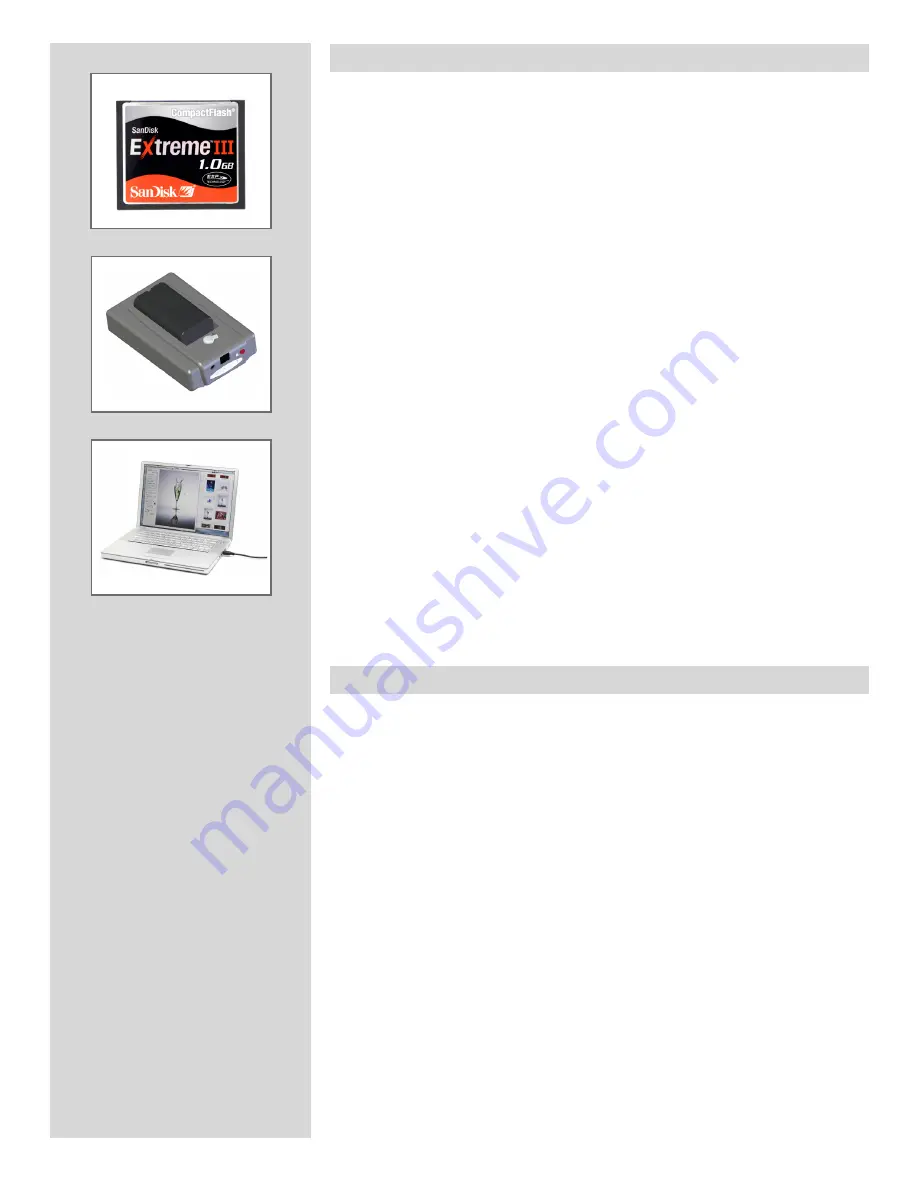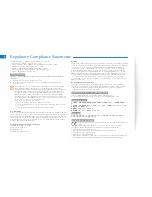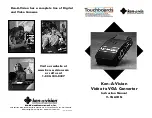
23
Shooting/image storage modes
The 503 CWD can store captured images in three ways:
1. Untethered / Compact flash card mode
In this mode the 503 CWD acts independently of other connections. Images are stored
on the internal, removable compact-flash card.
• The main advantage with this mode is the freedom of cables and extra equip-
ment.
• The main disadvantages with this mode in the field are the battery power capacity
and the size of the card’s holding capacity.
2. Semi-tethered / Imagebank mode
This mode enables you to attach the camera to a portable Hasselblad Imagebank via a
FireWire cable. The Imagebank features massive storage capacity and high-speed data
transfer. It is small, lightweight, battery powered and easily clips to your belt, so the
solution is just as portable as the untethered option.
• The main advantage with this mode is the great number of images that can be
stored without a pause.
• The main disadvantage with this mode is the extra equipment and cablage needed
that might restrict mobility in some cases.
3. Tethered / Studio mode
This mode enables you to connect your 503 CWD directly to a computer and to operate
the system using Hasselblad FlexColor software and store images on a computer hard-
disk.
• The main advantages with this mode are the almost limitless storage capacity and
being able to work on the images (with Hasselblad FlexColor) on a large screen.
• The main disadvantage with this mode is the lack of mobility to any great extent.
Selecting the current medium
A choice has to be made concerning where the captured images will initially be stored.
The current storage medium is the location to which new shots are saved and from which
you can browse using the navigation button. In many cases, the destination medium is
selected automatically, for example:
• When you are connected to a computer, then images are always saved directly to
the computer hard disk.
• When only one medium is connected (e.g., a compact-flash card), then this medium
is automatically selected.
However, if you are working away from your computer and have several media attached
(e.g., both a card and an Imagebank, then you may need to select a medium explicitly if
you want to browse its contents and store images new to it.
There are two ways of selecting the current storage medium:
• See “Selecting the Current Storage Medium” for details.
• Use the zoom-out button to zoom all the way up to the top level, which shows all
connected media, and then zoom in on the appropriate medium and batch.
See “Navigating Media and Batches” for more information about selecting media
and batches in this way.
















































